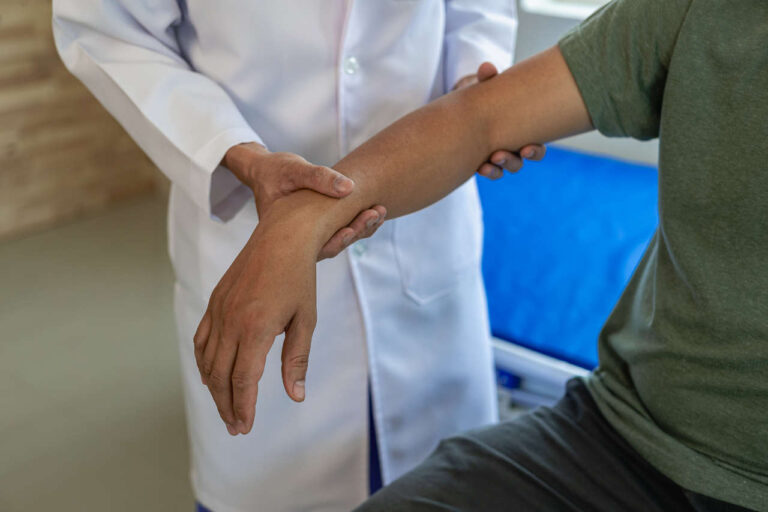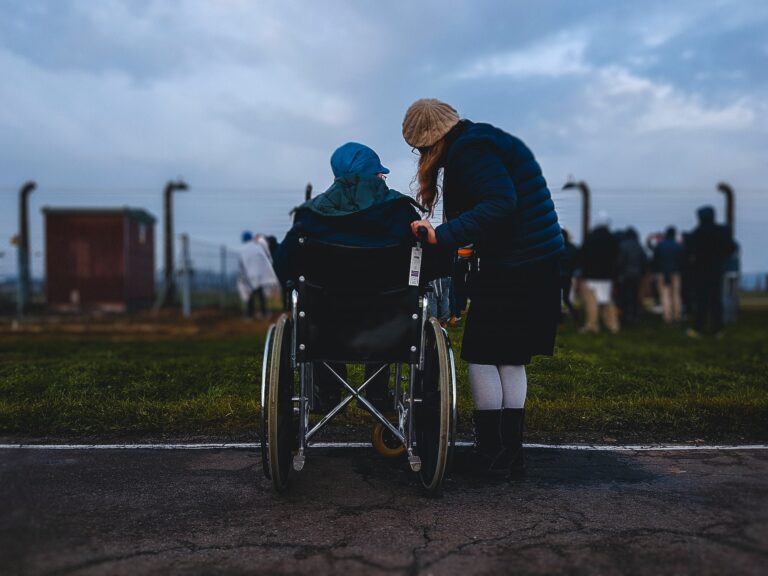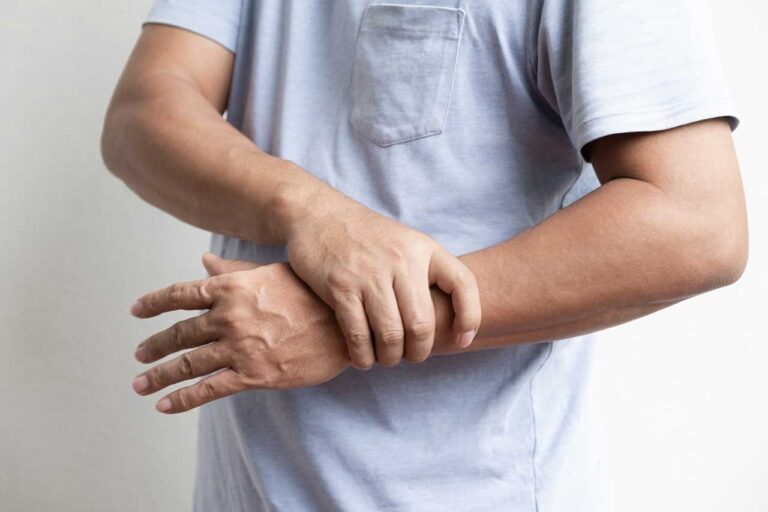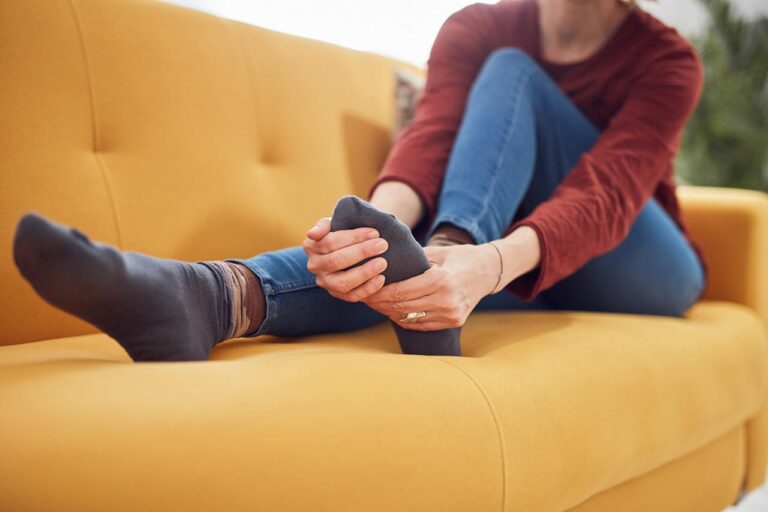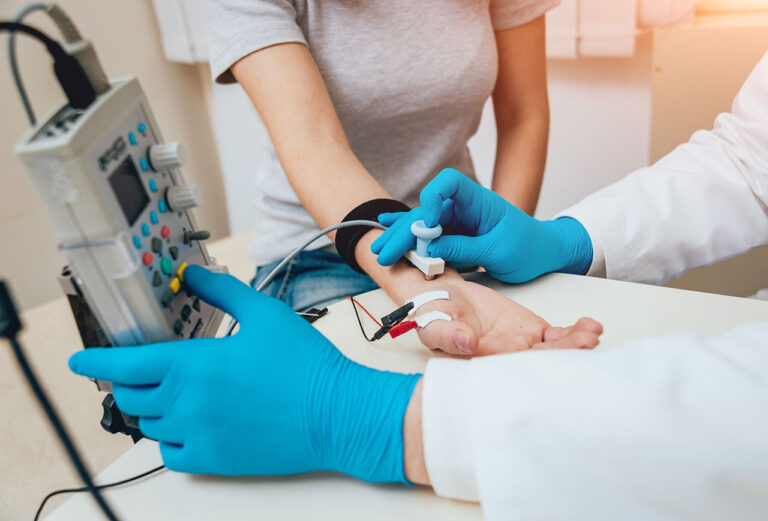
Guillain-Barre syndrome (GBS) is a rare autoimmune condition that can lead to rapid muscle weakness and even paralysis if not treated. Various treatment options are available for Guillain-Barre syndrome that can alleviate symptoms and help individuals regain function.
Get Your IVIG Dose
At-Home InfusionFrom plasmapheresis to IVIG and physical therapy, each treatment offers advantages that can support patients at different stages of the disease.
In this guide, we will explore the most effective treatments for Guillain-Barre syndrome. We will dive deeper into their mechanisms, examine the studies assessing their efficacy, and review the drugs healthcare providers often prescribe for those with Guillain-Barre syndrome.
Understanding Guillain-Barre Syndrome
Guillain-Barre syndrome occurs when the body mistakenly attacks the peripheral nervous system. The exact cause of GBS remains unclear. However, it usually follows a viral infection or other triggering events like gastrointestinal illnesses.
The appropriate treatment for Guillain-Barre syndrome is determined based on each individual’s symptoms, which may vary in severity and can develop over hours or days. Common symptoms of GBS include:
- Loss of reflexes
- Pain or discomfort
- Heart rate abnormalities
- Difficulty with eye movements
- Bowel and bladder dysfunction
- Weakness or tingling in the legs
- Rapid onset of muscle weakness
- Difficulty walking or climbing stairs
Without timely intervention, patients may face severe muscle weakness, paralysis, respiratory failure, and other life-threatening conditions. They may also experience prolonged recovery times and long-term disabilities.
Treatment Options
GBS is a treatable condition with prompt diagnosis and intervention. Most patients who receive Guillain-Barre syndrome treatments early can experience significant recovery, with 80% being able to walk independently within 6 months of diagnosis.
Several Guillain-Barre syndrome treatment options are currently available that can help manage symptoms and improve recovery outcomes. These treatments include:
- Plasmapheresis (plasma exchange)
- Intravenous immunoglobulin (IVIG) therapy
- Medication therapy
- Occupational and physical therapy
Plasmapheresis
Plasmapheresis is a plasma exchange procedure that uses a machine to separate dysfunctional antibodies from a person’s blood. Once these antibodies are removed, the blood is returned to the body. By reducing destructive antibodies, plasmapheresis aims to alleviate symptoms and accelerate recovery.
Research shows that Guillain-Barre patients undergoing this treatment tend to regain the ability to walk sooner than those who only receive supportive care and drugs for Guillain-Barre syndrome.
For instance, one trial reported a median recovery time of 30 days for those who received plasma exchange compared to 44 days for those who did not.
In addition to faster recovery times, those receiving plasmapheresis for Guillain-Barre syndrome have a higher rate of improvement in motor function. While there is a small risk of relapse within the first year following treatment, the potential benefits outweigh this concern.
Get IVIG Copay Assistance
Speak to a SpecialistIntravenous Immunoglobulin (IVIG Therapy)

Intravenous immunoglobulin therapy (IVIG) is often given to patients to help treat antibody deficiencies or conditions that release harmful antibodies in the blood, such as autoimmune diseases or antibody deficiency disorders.
This treatment for Guillain-Barre syndrome uses antibodies derived from donated blood. These healthy antibodies help reduce the harmful antibodies that can damage the body’s nerves. The therapy is administered directly into the patient’s veins (intravenously) as prescribed by a doctor.
Studies show promising results for IVIG therapy. For instance, a review of 12 trials with over 600 participants highlighted that IVIG significantly hastened recovery compared to supportive care and was as effective as plasma exchange therapy.
Another study showed that a greater increase in serum IgG levels after treatment was associated with improved recovery outcomes for patients with Guillain-Barre syndrome. These patients were more likely to regain the ability to walk independently within 6 months.
Medications
Pain medications may be administered to ease pain caused by GBS. If the patient is experiencing paralysis or is immobile, the doctor may also prescribe several drugs for Guillain-Barre syndrome to prevent blood clots.
Some of the most common pharmacological treatments for Guillain-Barre syndrome include the following:
- Nonsteroidal Anti-Inflammatory Drugs (NSAIDs): These medications, such as ibuprofen or naproxen, help reduce inflammation and alleviate pain in muscles and joints.
- Acetaminophen: This over-the-counter pharmacological treatment can help manage mild to moderate pain in Guillain-Barre patients and is often used in conjunction with other pain medications.
- Narcotic Analgesics (Opioids): For more severe pain, doctors may prescribe opioids. These medications work by binding to opioid receptors in the brain to reduce the perception of pain. However, they can have side effects and a risk of dependency.
- Gabapentin: Used primarily for neuropathic pain, gabapentin can help relieve burning or stabbing sensations associated with nerve damage in GBS.
- Carbamazepine: Similar to gabapentin, carbamazepine is another adjuvant treatment for Guillain-Barre syndrome that’s beneficial for managing neuropathic pain.
- Capsaicin Cream: Capsaicin cream is derived from chili peppers and applied topically. It diminishes substance P, a neurotransmitter involved in pain signaling.
- Tricyclic Antidepressants (TCAs): Drugs like amitriptyline may also be utilized for Guillain-Barre syndrome as an adjuvant treatment due to their analgesic properties in treating chronic pain. They work by altering neurotransmitter activity in the brain, which can help reduce pain perception.
Ask About IVIG Home Infusion
Occupational and Physical Therapy
To prevent the arms and legs from becoming immobile and remain flexible, your doctor may recommend movements through occupational and physical therapy. According to studies, exercise is crucial for the treatment of Guillain-Barre syndrome.
One trial compared high-intensity exercise to lower-intensity regimens in 79 chronic-phase patients. Results showed that those engaging in high-intensity exercises experienced a significant reduction in disability, with 80% achieving improvements in mobility compared to just 8% in the lower-intensity group.
Another study highlighted that 12 weeks of structured exercise led to notable enhancements in cardiopulmonary function and strength, underscoring the benefits of physical activity in addition to the primary Guillain-Barre syndrome treatments.
Recommended Rehabilitation Activities
In addition to the main treatments and drugs for Guillain-Barre syndrome, your healthcare team might recommend working with an occupational or physical therapist for faster recovery. Some common exercises these professionals might suggest to support your Guillain-Barre syndrome treatment include:
- Strengthening Exercises: These exercises are focused on building muscle strength and may include resistance band workouts or weightlifting to enhance overall physical capabilities.
- Aerobic Training: Activities like cycling or walking, performed 2-3 times a week, to improve cardiovascular health and stamina.
- Flexibility and Stretching Routines: These exercises involve stretching major muscle groups to maintain joint mobility and prevent stiffness.
- Balance and Coordination Drills: Incorporating exercises that focus on improving balance and coordination, such as standing on one leg or using stability balls.
- Functional Mobility Training: Activities that simulate daily tasks, enabling individuals receiving Guillain-Barre treatment to practice movements like standing up from a chair or walking.
- Gait Training: This exercise is focused on improving walking patterns and may include using parallel bars or treadmills under the supervision of a therapist.
By adhering to a structured physical therapy regimen, individuals with GBS can significantly enhance their recovery journey, boost their mental well-being, and instill a sense of hope in themselves.
Receive Guillain-Barre Syndrome Treatment from AmeriPharma® Specialty Pharmacy
Guillain-Barre syndrome is a manageable disease when not overlooked and is promptly diagnosed and treated. With the mentioned treatments, symptoms of Guillain-Barre syndrome can be carefully monitored and treated according to severity based on each patient’s clinical status.
Whether you need IVIG therapy or drugs for Guillain-Barre syndrome, AmeriPharma® Specialty Pharmacy can help. Our ACHC-accredited specialty pharmacy offers home infusion services and hard-to-find medications to patients in over 40 U.S. states and territories.
Contact us today to speak to a patient navigator and explore our Guillain-Barre syndrome treatment options with full-service coordination, copay assistance, and 24/7/365 support.


